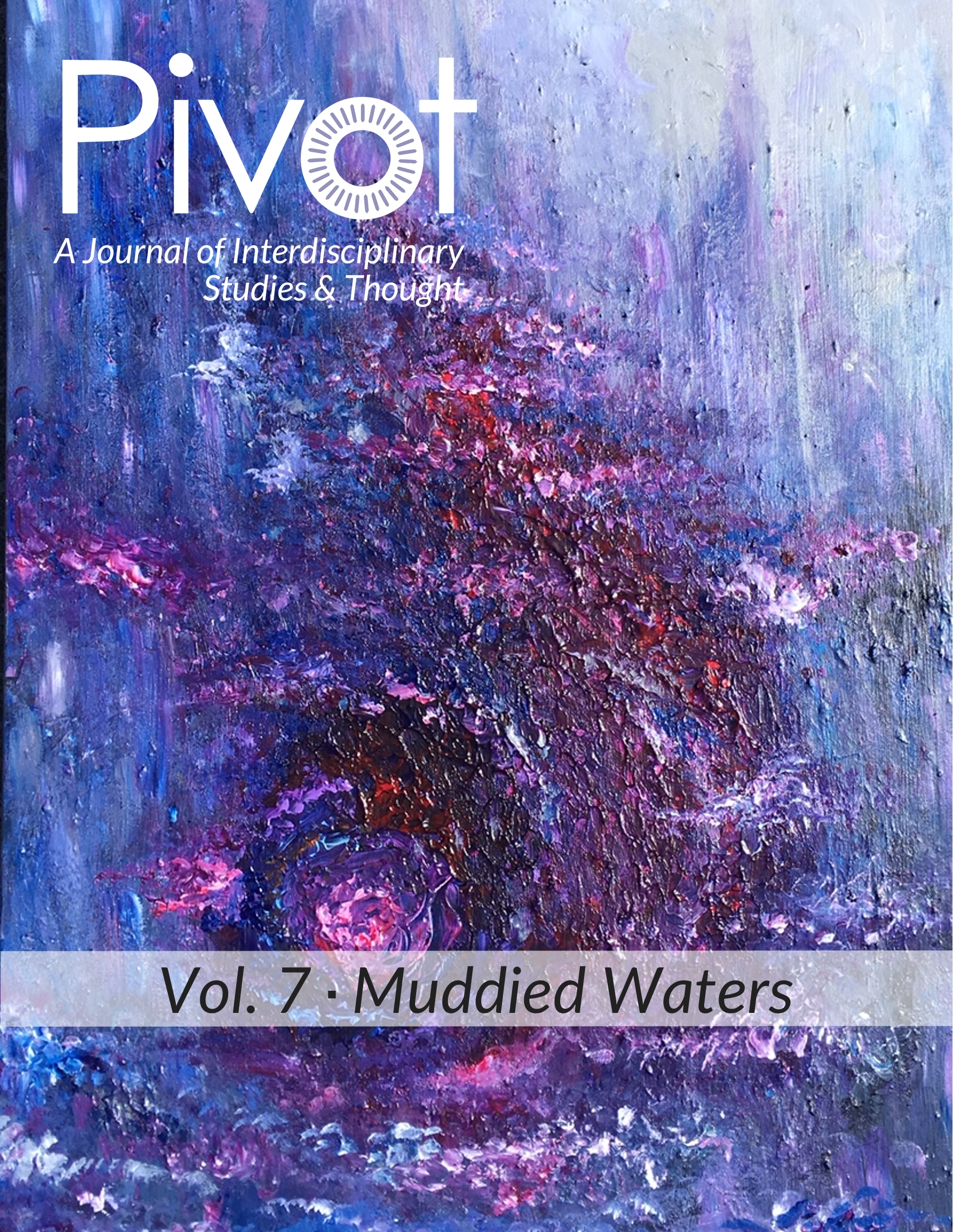Speculations on the Mediterranean Borderscape: Le Baiser de Lampedusa
DOI:
https://doi.org/10.25071/2369-7326.40302Abstract
Authors of academic research on globalization often employ watery metaphors -fluidity, circulation, flows - in attempt to analyze the unlimitedness of movements of capital, commodities, ideas, and people. The frictionless sea has thus come to be the metaphor of circulation par excellence. Yet, in the last two decades, the hardening of migration policies all over Europe and beyond EU borders, which has aimed at strengthening a water-barrier between Europe and its “southern beyond”, compels for a consideration of the maritime space, the Mediterranean Sea, as b/order space(s). Through a geo-literary analysis of the novel Le Baiser de Lampedusa (2011) by Mounir Charfi, I will focus my attention on the ways in which the Mediterranean Sea is rendered, modeled and reflected as a b/order space in and through literary representation. The author through the close association of the ordinary and the fantastic, and employing a narrative mode that undermines realism, creates an alternative description of the Mediterranean borderscape in which basic assumptions of referentiality do not hold anymore. In fact, throughout the narrative, the notion of the Mediterranean sea is challenged and its visual appearance becomes blurred and disappears. As a consequence of its disappearance, continents shift and geographic regions are subverted. What emerges is first that the understanding of the Mediterrannean Sea as a b/order is put into question, and secondly, that geopolitical delimitations are not only arbitrary but also flexible. Therefore, the following article deals with the realm of counterfactual geography in border fiction.
References
Anzaldúa, Gloria. Borderlands/La Frontera: The New Mestiza. Spinsters/Aunt Lute, 1994.
Appadurai, Arjun. Modernity at Large: Cultural Dimensions of Globalization. U of Minnesota P, 1996.
Ben Slimane, Fatima. “Between empire and nation-state: the problem of borders in the Maghreb.” Mediterranean Frontiers: Borders, Conflict and Memory in a Transnational World, edited by Dimitar Bechev and Kalypso Nicolaidis, Tauris Academic Studies, 2010, pp. 35-55.
Bhabha, Homi K. The Location of Culture. Routledge, 1994.
Brambilla, Chiara. “Pluriversal, Citizenship and Borderscapes.”Transient Spaces: The Tourist Syndrome, edited by Antje Weitzel and Marina Sorbello, Argobooks, 2010, pp. 61-65.
Braudel, Fernand. Memory and the Mediterranean. Translated by Siân Reynolds, Random House, 2001.
Chambers, Ian. Mediterranean Crossings: The Politics of an Interrupted Modernity. Duke UP, 2008. DOI: https://doi.org/10.1215/9780822388869
Charfi, Mounir. Le Baiser de Lampedusa. Arabesques, 2011.
Cuttitta, P. “Points and Lines: A Topography of Borders in the Global Space.” Ephemera: Theory and Politics in Organizations, vol. 6, no. 1, 2006, pp. 27-39.
Dannenberg, Hilary. Coincidence and Counterfactuality: Plotting Time and Space in Narrative Fiction. U of Nebraska P, 2008. DOI: https://doi.org/10.2307/j.ctt1dgn486
De Certeau, Michel. The Practice of Everyday Life. Translated by Steven Rendall, U of California P, 1984.
Donnan, H. and Haller D. “Liminal No More: The Relevance Borderland Studies.” Ethnologia Europaea, vol. 30, no. 2, 2010, pp. 7-22.
Farinelli, Franco. I segni del mondo: Immagine cartografica e discorso geografico in età moderna. La Nuova Italia, 1992.
Harvey, David. The Condition of Postmodernity: An Enquiry into the Origins of Cultural Change. Blackwell, 1989.
Linden, Stanton J. The Alchemy Reader: From Hermes Trismegistus to Isaac Newton. Cambridge UP, 2003. DOI: https://doi.org/10.1017/CBO9781107050846
Lowe, Lisa. The Intimacies of Four Continents. Duke UP, 2015. DOI: https://doi.org/10.1215/9780822375647
Mezzadra, S. and Neilson B. “Fabrica mundi: producing the world by drawing borders.” Scapegoat: Architecture, Landscape, Political Economy, Currency, vol. 4, pp. 3-19.
Mezzadra, S. and Neilson B. Border as Method, or, the Multiplication of Labor. Duke U P, 2013. DOI: https://doi.org/10.1215/9780822377542
Newman, David. “The lines that continue to separate us: borders in our 'borderless' world.” Progress in Human Geography, vol. 30, no. 2, 2006, pp. 143-161. DOI: https://doi.org/10.1191/0309132506ph599xx
Pfister, Manfred. “Europa/Europe: Myths and Muddles.” Myths of Europe, edited by Richard Littlejohns and Sara Soncini, Rodopi , 2007, pp. 21-33. DOI: https://doi.org/10.1163/9789401203944_004
Prieto, Eric. “Geocriticism, Geopoetics, Geophilosophy, and Beyond.” Geocritical Explorations, edited by Robert Tally, Palgrave Macmillan, 2011, pp. 13-28. DOI: https://doi.org/10.1057/9780230337930_2
Read, J. “Alchemy and Alchemists.” Folklore, vol. 44, no. 3, 1933, pp. 251-278. DOI: https://doi.org/10.1080/0015587X.1933.9718503
Ribas-Mateos, Natalia. “Revising Migratory Contexts: The Mediterranean Caravanserai.” The Mediterranean Passage. Migration and New Cultural Encounters in Southern Europe, edited by Russel King, Liverpool UP, 2001, pp. 22-40.
Rivera-Servera, Ramón H. “Border Moves.” Performance in the Borderland, edited by Ramón Rivera-Severa and Young Harvey, Palgrave Macmillan, 2010, pp. 1-16. DOI: https://doi.org/10.1057/9780230294554_1
Tally, Robert T. Spatiality. Routledge, 2013. DOI: https://doi.org/10.4324/9780203082881
Westphal, Bertrand. Geocriticism: Real and Fictional Spaces. Translated by Robert Tally, Palgrave Macmillan, 2011.
Widmann, Andreas Martin. “Towards a Typology of Counterfactual Historical Novels.” Counterfactual Thinking and Counterfactual Writing, edited by Dorothee Birke, Michael Butter and Tilmann Köppe, Walter de Gruyter, 2001, pp. 170-89.

